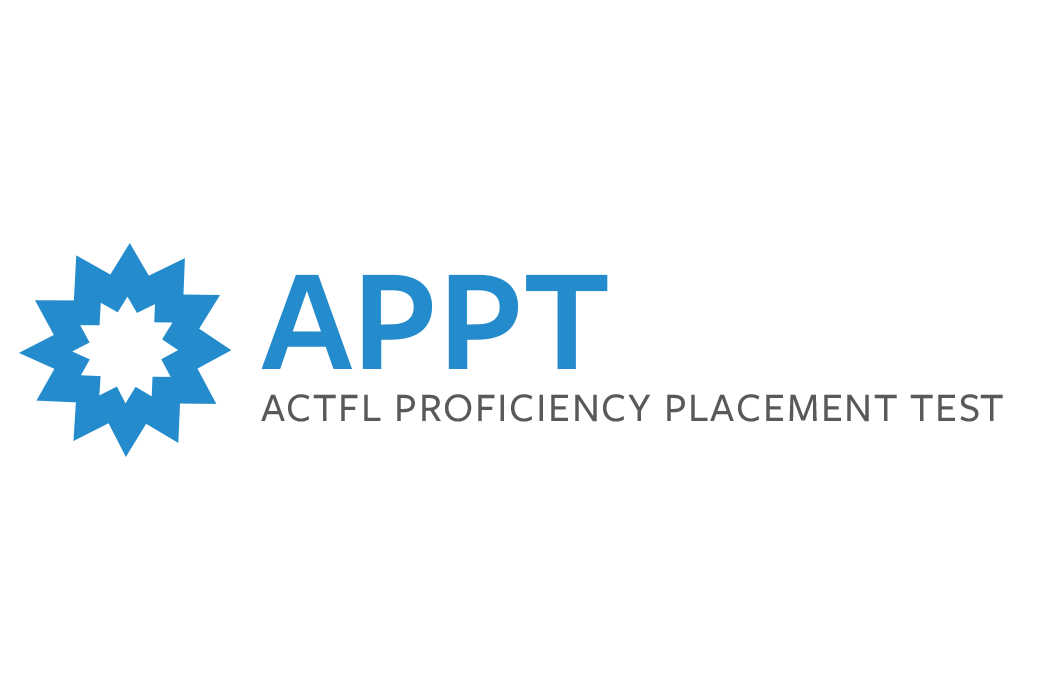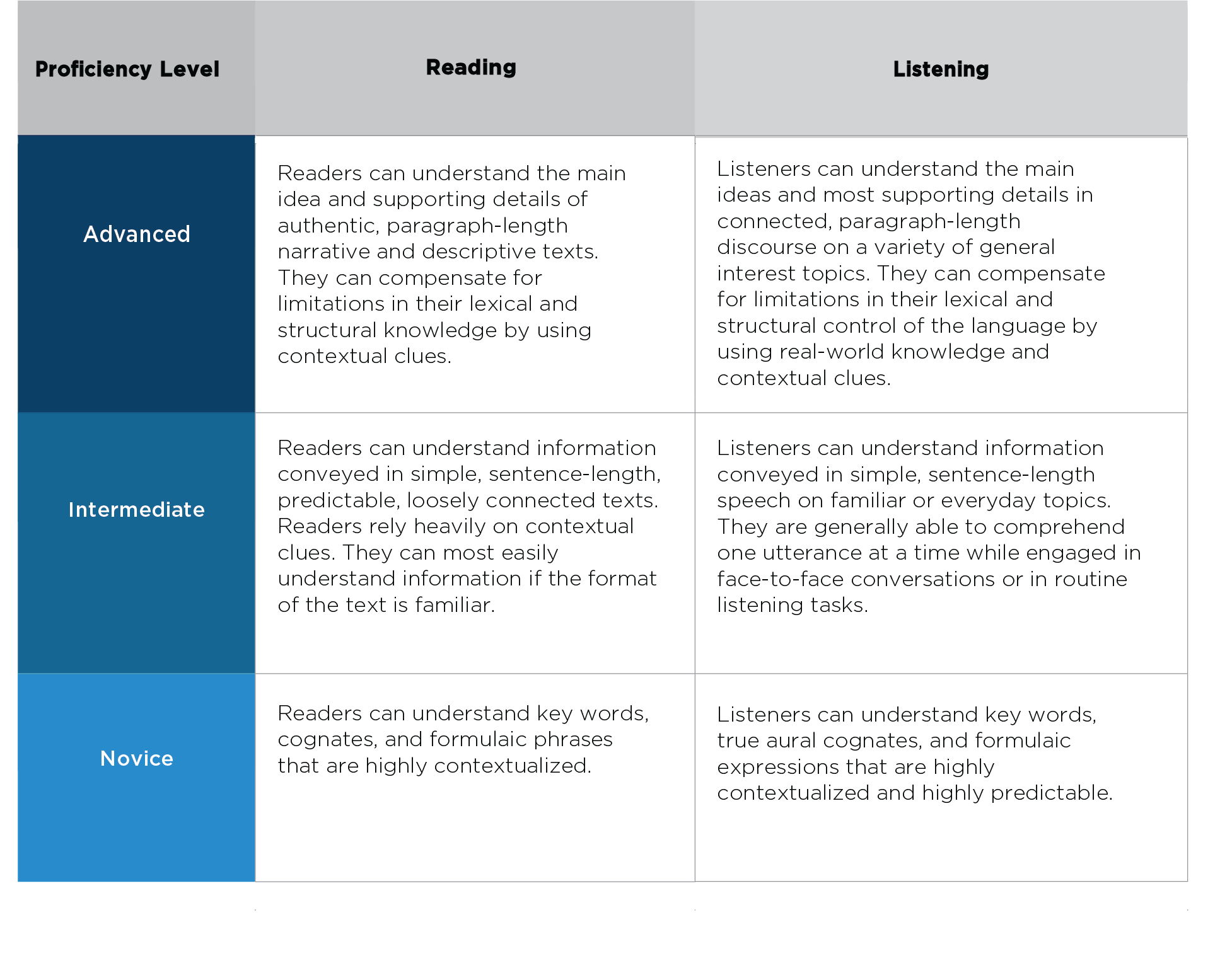Languages
The ACTFL Proficiency Placement Test (APPT) is available in French and Spanish.
Reasons to Use APPT
The ACTFL Proficiency Placement Test (APPT) is designed for students entering university language programs who wish to determine their reading and listening proficiency levels for placement in language courses. It assists language program faculty in making informed decisions regarding which language course would be the best course of study based on the learner’s language ability.
Format
The APPT was developed in partnership with Brigham Young University’s (BYU) Center for Language Studies. The test consists of two sections, reading and listening, which assess the interpretive mode of communication.
The listening and reading sections consist of genuine audio passages and reading texts across a range of proficiency levels to assess language proficiency between Novice Low and Advanced Low. Listening passages and reading texts vary in genre, content, length, and complexity depending on the level being targeted. Each passage or text is followed by one multiple-choice question in English.
As a computer adaptive test, the APPT adapts to the test taker's listening and reading abilities; the computer algorithm selects questions based on the test taker’s performance on previous questions. Test questions will be presented to the test taker until enough information has been gathered to assign a “floor” rating (the level where the test taker has demonstrated sustained performance) and a “ceiling” rating (the level where patterns of breakdown emerge). Then the test will end.
This makes the test efficient in both time and effort, lasting up to 60 minutes for both the reading and listening sections. While the test is not timed, individual test questions require a response within a predetermined amount of time for each proficiency level.
Each section presents between 10-25 questions depending on the ability of the test taker. A demo test is available online.

